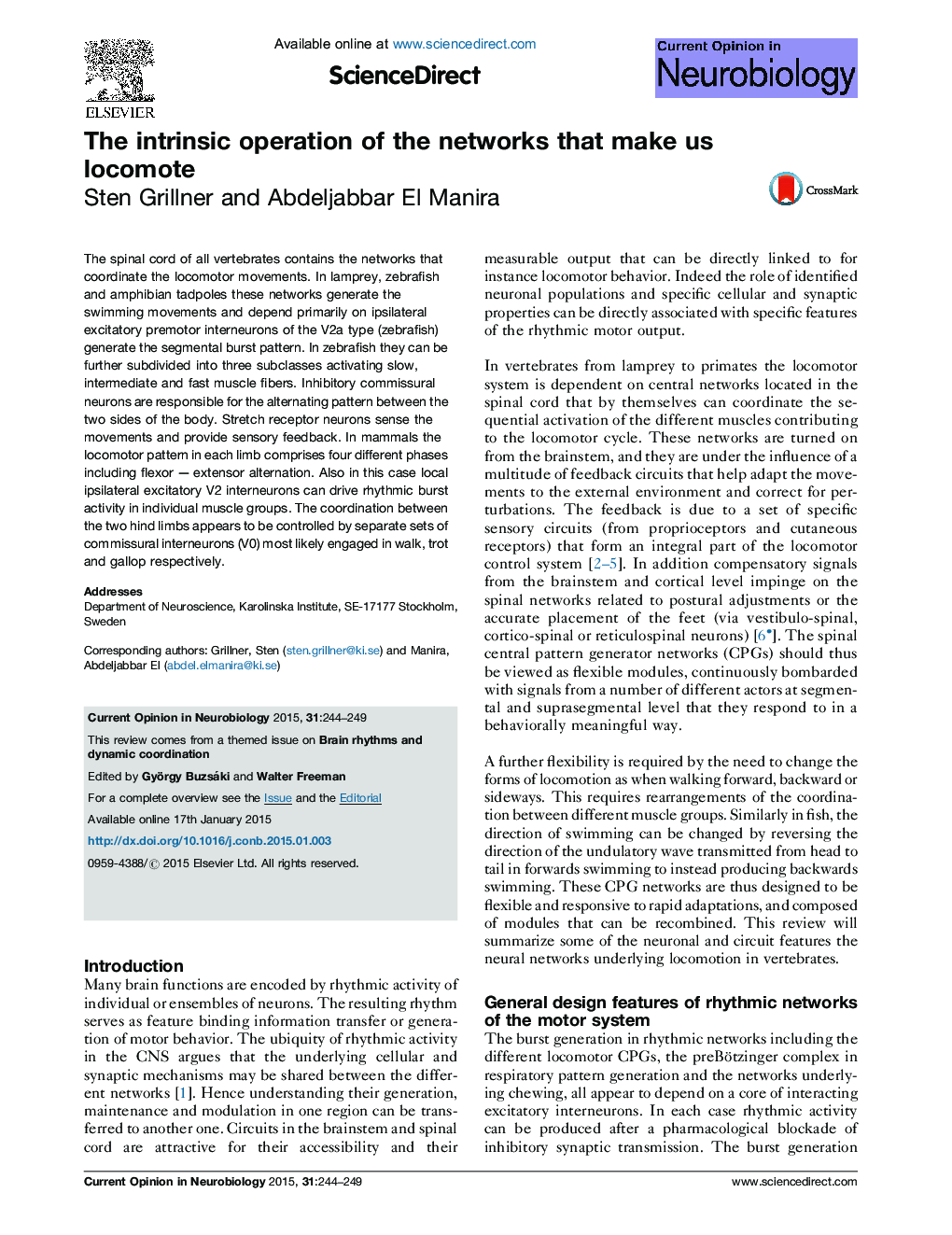| Article ID | Journal | Published Year | Pages | File Type |
|---|---|---|---|---|
| 6266254 | Current Opinion in Neurobiology | 2015 | 6 Pages |
â¢Core of excitatory V2a interneurons form burst-generating units.â¢Subclasses of V2a interneurons innervate slow, intermediate and fast motoneurons in zebrafish.â¢V0 neurones contribute to interlimb coordination.â¢Variation in cellular properties within one class of neurons makes for more stable network activity - a design feature.
The spinal cord of all vertebrates contains the networks that coordinate the locomotor movements. In lamprey, zebrafish and amphibian tadpoles these networks generate the swimming movements and depend primarily on ipsilateral excitatory premotor interneurons of the V2a type (zebrafish) generate the segmental burst pattern. In zebrafish they can be further subdivided into three subclasses activating slow, intermediate and fast muscle fibers. Inhibitory commissural neurons are responsible for the alternating pattern between the two sides of the body. Stretch receptor neurons sense the movements and provide sensory feedback. In mammals the locomotor pattern in each limb comprises four different phases including flexor - extensor alternation. Also in this case local ipsilateral excitatory V2 interneurons can drive rhythmic burst activity in individual muscle groups. The coordination between the two hind limbs appears to be controlled by separate sets of commissural interneurons (V0) most likely engaged in walk, trot and gallop respectively.
